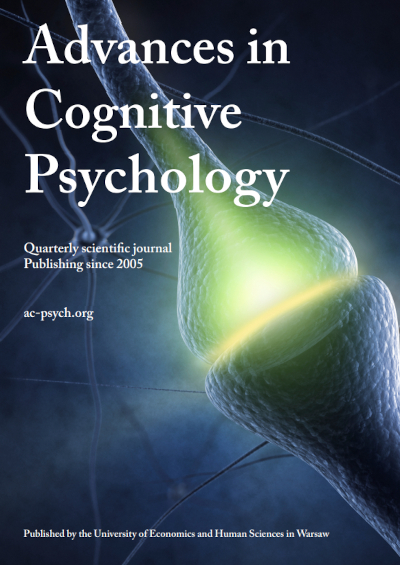Archive of all online content
-
Volume 21 Issue 4
pp. 309-500
(16 November 2025) -
Volume 21 Issue 3
pp. 212-308
(2 September 2025) -
Volume 21 Issue 2
pp. 120-211
(25 May 2025) -
Volume 21 Issue 1
pp. 1-93
(11 March 2025)
-
Volume 20 Issue 4
pp. 237-388
(20 November 2024) -
Volume 20 Issue 3
pp. 158-236
(19 August 2024) -
Volume 20 Issue 2
pp. 80-157
(24 June 2024) -
Volume 20 Issue 1
pp. 1-79
(1 March 2024)
-
Volume 19 Issue 4
pp. 1-105
(27 December 2023) -
Volume 19 Issue 3
pp. 211-333
(25 July 2023) -
Volume 19 Issue 2
pp. 111-200
(30 June 2023) -
Volume 19 Issue 1
pp. 1-110
(31 March 2023)
-
Volume 18 Issue 4
pp. 243-303
(31 December 2022) -
Volume 18 Issue 3
pp. 165-202
(30 September 2022) -
Volume 18 Issue 2
pp. 85-164
(30 June 2022) -
Volume 18 Issue 1
pp. 1-84
(31 March 2022)
-
Volume 17 Issue 4
pp. 250-291
(31 December 2021) -
Volume 17 Issue 3
pp. 193-249
(30 September 2021) -
Volume 17 Issue 2
pp. 99-192
(30 June 2021) -
Volume 17 Issue 1
pp. 1-98
(31 March 2021)
-
Volume 16 Issue 4
pp. 291-369
(31 December 2020) -
Volume 16 Issue 3
pp. 176-290
(30 September 2020) -
Volume 16 Issue 2
pp. 85-175
(30 June 2020) -
Volume 16 Issue 1
pp. 1-84
(31 March 2020)
-
Volume 15 Issue 4
pp. 236-317
(31 December 2019) -
Volume 15 Issue 3
pp. 169-235
(30 September 2019) -
Volume 15 Issue 2
pp. 75-168
(30 June 2019) -
Volume 15 Issue 1
pp. 1-74
(31 March 2019)
-
Volume 14 Issue 4
pp. 150-208
(31 December 2018) -
Volume 14 Issue 3
pp. 62-150
(30 September 2018) -
Volume 14 Issue 2
pp. 38-61
(30 June 2018) -
Volume 14 Issue 1
pp. 1-37
(31 March 2018)
-
Volume 13 Issue 4
pp. 267-322
(31 December 2017) -
Volume 13 Issue 3
pp. 190-266
(30 September 2017) -
Volume 13 Issue 2
pp. 121-189
(30 June 2017) -
Volume 13 Issue 1
pp. 1-120
(31 March 2017)
-
Volume 12 Issue 4 (special issue)
pp. 150-235
(31 December 2016) -
Volume 12 Issue 3
pp. 130-149
(30 September 2016) -
Volume 12 Issue 2
pp. 67-129
(30 June 2016) -
Volume 12 Issue 1
pp. 1-66
(31 March 2016)
-
Volume 11 Issue 4
pp. 118-135
(31 December 2015) -
Volume 11 Issue 3
pp. 64-117
(30 September 2015) -
Volume 11 Issue 2
pp. 31-63
(30 June 2015) -
Volume 11 Issue 1
pp. 1-30
(31 March 2015)
-
Volume 10 Issue 4
pp. 119-155
(31 December 2014) -
Volume 10 Issue 3
pp. 81-118
(30 September 2014) -
Volume 10 Issue 2
pp. 32-80
(30 June 2014) -
Volume 10 Issue 1
pp. 1-31
(27 February 2014)
-
Volume 9 Issue 4
pp. 156-223
(31 December 2013) -
Volume 9 Issue 3
pp. 112-155
(24 October 2013) -
Volume 9 Issue 2
pp. 53-111
(30 June 2013) -
Volume 9 Issue 1
pp. 1-52
(31 March 2013)
-
Volume 8 Issue 4
pp. 267-295
(31 December 2012) -
Volume 8 Issue 3
pp. 210-266
(27 September 2012) -
Volume 8 Issue 2
pp. 70-209
(28 June 2012) -
Volume 8 Issue 1
pp. 1-69
(29 March 2012)
-
Volume 7 Issue 2
pp. 55-156
(31 December 2011) -
Volume 7 Issue 1
pp. 1-54
(31 March 2011)
-
Volume 6 Issue 6
pp. 1-141
(31 December 2010)
-
Volume 5 Issue 5
pp. 1-134
(31 December 2009)
-
Volume 4 Issue 1
pp. 1-14
(31 March 2008)
-
Volume 3 Issue 4
pp. 419-465
(31 December 2007) -
Volume 3 Issue 3
pp. 363-417
(30 September 2007) -
Volume 3 Issue 1
pp. 1-361
(31 March 2007)
-
Volume 2 Issue 4
pp. 239-276
(31 December 2006) -
Volume 2 Issue 2
pp. 99-237
(30 June 2006) -
Volume 2 Issue 1
pp. 1-97
(31 March 2006)
-
Volume 1 Issue 1
pp. 1-16
()
Volume 21 Issue 3 (2025)
If you had to choose…: An Ipsative Method to Understand Mate Choice
Peter K. Jonason, Kamila Zagórska

Peter K. Jonason, VIZJA University, Psychology Research Institute, Okopowa 59, 01-043 Warsaw, Poland.
Email: pkjonason@gmail.com
While there is much research on what people want in their romantic and sexual partners, the methods are limited in several ways (e.g., ad hoc, limited ecological validity, exploratory). In this pilot study (N = 185), we present and validate a simple, flexible, behavioral, and straightforward way of assessing mating decisions as opposed to mate preferences, economic tradeoffs, or gestalt choices like in speed dating studies. In this method, participants are asked to choose between pairs of traits they might desire in their romantic and sexual partners, and the number of times each trait was chosen is summed. Further, we advance a need-based approach, suggesting that the things people want in their partners serve psychological and physical needs that can be present today and could have been present over evolutionary time. We suggest that seeking or choosing physicality, compassion, competence, and compatibility solve the major challenges presented in relationships like sexual arousal, intra-relational safety, extra-relational safety, and long-term coordination of life, respectively. We replicated effects in relation to sex differences and contexts effects consistent with sexual strategies theory and extended that to show that compatibility is the most highly valued trait in their partners by men and women regardless of context.
Keywords: mate choice, sex differences, life history, evolutionary psyPersonality and Specialty Preferences in Medical School: A Secondary Analysis of a Cross- Sectional Study in Türkiye
İrem F. Kaşıkçı, Bayram M. Savrun, Peter K. Jonason

İrem F. Kaşıkçı. İstanbul University Cerrahpaşa, Institute of Forensic Sciences and Legal Medicine, İstanbul Üniversitesi-Cerrahpaşa Adli Tıp ve Adli Bilimler Enstitüsü Büyükçekmece Yerleşkesi Alkent 2000 Mahallesi Yiğittürk Caddesi No:5, 34500 Büyükçekmece/İstanbul, Türkiye.
Email: iremfatma.kasikci@ogr.iuc.edu.tr
In this cross-sectional study, we examined whether the personality traits and specialty preferences of Turkish medical students (N = 269; 166 women), aged 18 to 25 (M = 20.69, SD = 1.72), changed as they progressed through their education. We found that (a) students who were further along in their education had less empathic perspective-taking and enjoyed competition less; (b) while the enjoyment of competition decreased it did so more strongly in women than in men; (c) women who were further (compared to less further along) along in their education were more narcissistic, especially when individual differences in the enjoyment of competition were accounted for; (d) students’ preferences for surgical and psychiatric specialties decreased as they progressed through their education, an effect mediated by individual differences in perspective-taking; and (e) the decline in the preference for surgery was stronger in women than in men, an effect that became stronger when individual differences in narcissism were removed. These findings suggest that medical school education may influence both personality traits and specialty preferences, with potential differential effects in men and women. As students progress, shifts in empathy and competitiveness could play a role in shaping their career interests, particularly in relation to surgery and psychiatry. However, as this is a crosssectional study, longitudinal research is needed to better understand the direction and stability of these changes over time.
Keywords: medicine, narcissism, empathy, competitiveness, educational milieu, sex differencesHow Social Collaboration Helps and Hurts the Episodic Memory of Emotional Gender Stereotypes: Insight From Part-Set Cues
Aiqing Nie, Mengmeng Li

Aiqing Nie, School of Psychology, Shanxi Normal University, 339 Taiyu Road, Taiyuan, China 030031.
Email: nieaiq@126.com
It has been extensively documented that collaboration in memory can result in both costs (e.g., collaborative inhibition) and benefits (e.g., error pruning and post-collaborative memory benefit). It remains unclear whether these effects apply to remembering the social information and whether their occurrences might be influenced by the setting of part-set cues during recalls. To address these concerns, the current participants were asked to study gender stereotype words with differing emotional valences individually. They then completed two recall tests, Recall 1 and Recall 2. Recall 1 was conducted either individually or collaboratively, while Recall 2 was consistently performed individually. Both recalls tested participants’ memory of the studied words (item memory) as well as the gender of the speaker who just presented them (known as source memory). We discovered that the detrimental effect of collaborative inhibition was absent, indicating that the mechanisms elicited by part-set cues are comparable to those of social collaboration. Additionally, there were significant beneficial effects of error pruning and post-collaborative memory benefit. However, these effects demonstrated distinct sensitivity to our manipulations, emphasizing that the mechanisms of the retrieval strategy disruption hypothesis (RSDH) and the processes of the dual-process theory operate conditionally. Incidentally, we found the stereotype-consistent effect in both ongoing and post-collaboration situations, as well as in both item memory and source memory, indicating that this effect is insusceptible to the status of social collaboration and memory tasks. Finally, future research directions are provided.
Keywords: episodic memory, collaboration, part-set cues, collaborative inhibition, error pruning, post-collaborative memory benefit, gender stereotype, emotional valenceExploring Emotional Face Processing in Children With CU Traits Using Eye-Tracking Technology: Insights Into the Role of Sex Depicted in Emotional Faces
Antonios I. Christou, Kostas Fanti, Ioannis Mavrommatis, Georgia Soursou

Antonios I. Christou, University of Thessaly, Department of Special Education, Greece.
Email: antchristou@uth.gr
Callous-unemotional (CU) traits characterize youth that are at higher risk for the development of severe and persistent forms of aggressive and antisocial behavior. Importantly, the relevant literature has suggested a division of children with CU traits into those with primary (i.e., low anxiety and low emotional reactivity) and secondary (i.e., high anxiety and emotional hyper-reactivity) variants of CU traits. Research has pointed to mixed findings in emotional processing in children with varying levels of CU traits. Therefore, the present eye-tracking study sought to conduct a comprehensive exploratory investigation of facial emotional processing by carefully accounting for different types of stimuli (eyes/mouth, age/sex depicted) in a sample of children with varying levels of CU traits. The present study aims to shed extra light in this critical area of inquiry. The sample consisted of 150 children (M = 9.97; SD = 1.28, min = 7.5; max = 12.5; 49.0% girls). Results show that children with secondary variants of CU traits spent on average more time preferentially attending toward the happy and angry female faces compared to male faces in comparison to the low-risk, anxious, and primary CU groups. The study provides novel evidence into the existence of elevated levels of preferential attention in children with secondary CU traits that are documented with more time spent attending positively and negatively charged female faces.
Keywords: CU traits, childhood, eye-tracking, psychopathy, emotional dysregulationDark Desires: How Machiavellianism, Psychopathy, and Narcissism Shape Body Ideals and Attraction
Daniel Talbot, Małgorzata Pięta-Lendzion, Peter K. Jonason

Daniel Talbot, School of Behavioural and Health Sciences, Australian Catholic University, Strathfield, Sydney, Australia.
Email: danieltalbot89@gmail.com
The Dark Triad traits—Machiavellianism, psychopathy, and narcissism—are associated with manipulative, callous, and self-centeredness which may drive social dominance aspirations and interpersonal strategies. While these traits have been explored extensively in social and relational contexts, their association with body image and idealized physical traits in romantic partners remains underexplored. In this study (NMTurk = 320; 61% men) we examined the relationships between the traits and perceptions of body image, including muscularity and body fat, in both self-evaluation and partner preferences. We found that men high in Dark Triad traits perceived themselves as more muscular, whilst women high in Dark Triad traits perceived themselves as thinner, and women high in psychopathy tended have a lower Body Mass Index. Notably, partner body preferences did not differ across the Dark Triad spectrum. Our findings highlight the role of the Dark Triad traits in shaping body image perceptions and the necessary maintenance of a positive (attractive) body image in darker personalities.
Keywords: Dark Triad, sex differences, body image, body perception, attractionConceptualizing and Measuring Social Identity
Radosław Rogoza, Marta Marchlewska, Zuzanna Molenda, Oliwia Maciantowicz, Marta Rogoza, Dagmara Szczepańska, Dominika Maison

Radosław Rogoza, Institute of Psychology, Polish Academy of Sciences; VIZJA University, Warsaw, Poland.
Email: r.rogoza@psych.pan.pl
Recent advancements in empirical research differentiate the behavioral pathways and document the existence of either more authentic or narcissistic phenotypical manifestations of the ingroup identity. Although research on social identity is flourishing, there is little crosstalk between these two research branches. Thus, the goal of the current paper was to develop a new theoretical model, which would deal with the existing limitations. In a series of four studies (total N = 3284) we proposed and validated a new measure of authentic and narcissistic national identity – the Complete Identity Scale. The results supported the factorial, convergent, discriminant, construct, and ecological validity. The current study attempts to integrate research on in-group identity within one comprehensive framework.
Keywords: social identity, collective narcissism, outgroup negativity, validityConstraints on Imagination: Due to Morality or Weirdness?
Seth Chin-Parker, Grace Kennedy, Hannah Morton, Sylvia Phillips, Linxi Shen, David Miller, Tim Hagemeister

Seth Chin-Parker, PhD., Department of Psychology, Denison University, Granville, OH 43023 USA
Email: chinparkers@denison.edu
People have the ability to image nonoccurring possibilities, but there are limitations to what we are able (or willing) to imagine. Prior theoretical and empirical literature has raised several possibilities for this imaginative resistance. There is an open question regarding whether our ability to imagine different situations is related to moral values or more basic cognitive processes. Because the ability to imagine possibilities is closely tied to a range of mental activities, these limitations impact our ability to innovate, reason, and problem solve, so it is important to understand why they occur. We present two experiments where participants were asked to imagine scenarios that involved factual, ontological, and moral violations. We assessed the phenomenological qualities of the imaginative experiences as well as participant evaluations of various elements of the scenarios. We found that the phenomenological experience did not vary across the different types of violation or the perspective taken by the individual while imagining. However, there were differences in how participants rated the likelihood of the scenarios and informative patterns of correlations emerged among their ratings. We argue these results indicate imaginative resistance, when it occurs, reflects typical cognitive constraints.
Keywords: imagination, imaginative resistance, mental simulationImpact of Playing Video Games on Cognitive Domains
Anna Bogaczewicz, Jarosław Bogaczewicz

Jarosław Bogaczewicz, VIZJA University, ul. Okopowa 59, 01-043 Warsaw, Poland.
Email: j.bogaczewicz@vizja.pl
Video games genres can be classified according to scenario, narrative structure, mechanics, dynamics, interactions between the player and the game, and internet connection, as games can be played on-line via internet in real-time or off-line. With main respect to interactions between the player and the game, a simple classification includes traditional, strategy, simulation and action video games. Several links were found between playing certain video games and enhancement in some aspects of cognitive functioning such as divided attention, sustained attention, capacity of visual attention, visual working memory capacity, learning foreign language or second language, with different games enhancing different aspects of cognition. Most individuals play video games unproblematically, however, uncontrolled, excessive playing and its negative consequences require appropriate diagnosis. Gaming disorder is characterized by impaired control over gaming, increasing priority given to gaming and continuation or escalation of gaming despite the occurrence of negative consequences, associated with persistent or recurrent course over a period of at least 12 months and resultant significant interference with personal functioning. Studies indicate that gaming disorder is linked in some brain areas with underlying neurobiological changes such as increased glucose metabolism, hyperactivation or hypoactivation, lower resting-state static functional connectivity, reductions in synaptic density, decreased levels of dopamine D2 receptor availability, decreased gray matter volume, gray matter density, cortical thickness and cortical volume. Various psychological factors were found to be involved in gaming disorder, including motivations linked to reward-seeking, fascination with an alternative world and alternative self-concept, low self-esteem, impulsivity, dysregulation of reward system, and escapism.
Keywords: video games, computer games, internet, cognitive domains, gaming disorderDo Personality, Competence in Third Languages and Teaching Experience Predict Attitudes of Trainee Teachers to Plurilingual Didactics?
Katarzyna Cybulska-Gómez de Celis, Agnieszka Otwinowska, Małgorzata Foryś-Nogala

Katarzyna Cybulska-Gómez de Celis, VIZJA University, School of Humanities & Fine Arts, ul. Okopowa 59, 01-043 Warsaw, Poland.
Email: k.cybulska@vizja.pl
Plurilingual instruction celebrates learners’ linguistic abilities and perceives them as valuable resources. However, despite its promotion by European policies, implementing plurilingual didactics is challenging, as it is often linked to teachers’ beliefs and their own plurilingual profiles. This correlational study investigated how teaching experience, competence in third languages (L3s) and personality traits relate to trainee teachers’ beliefs about plurilingualism-inspired pedagogy. Pre-service teachers (N = 115) of English as a foreign language completed the HEXACO Personality Inventory, a custom-made questionnaire on attitudes to plurilingualism and plurilingual didactics, and a background questionnaire assessing their plurilingual competence and teaching experience. The analysis revealed that openness to experience was positively associated with appreciations of using the mother tongue in L2-English class, suggesting openness to challenging monolingual teaching norms. Conversely, honesty-humility was negatively associated with plurilingual instruction endorsement, possibly reflecting conformity to norms regarding sole L2-English use in class. Interestingly, competence in L3s did not independently predict positive attitudes to using other languages in L2 classes. However, for participants with some teaching experience, more diversified plurilingual competence predicted greater endorsement of plurilingualism-inspired pedagogy. These findings indicate that personality, competence in L3s and teaching experience jointly shape future teachers’ beliefs about plurilingual didactics.
Keywords: plurilingualism, plurilingual competence, multilingualism, pre-service teachers, personality traits, teaching experience, competence in L3s


